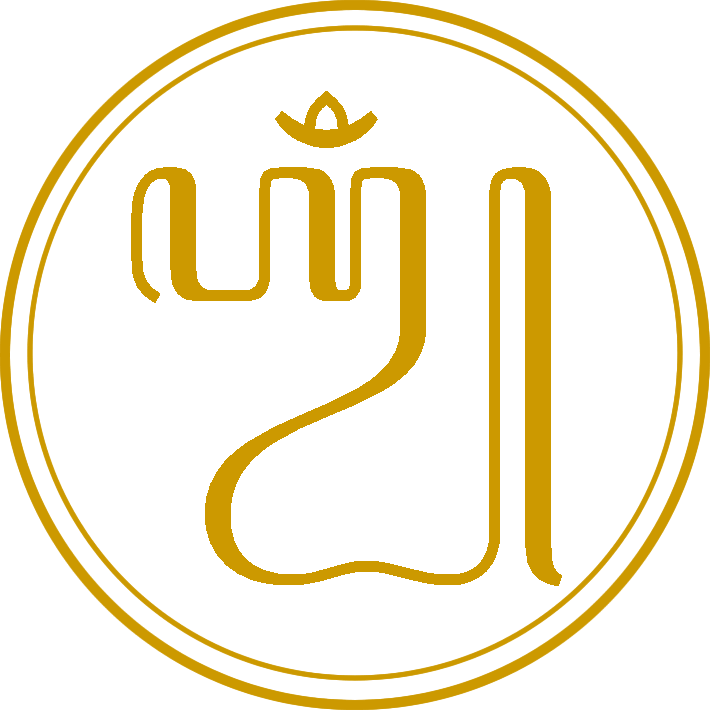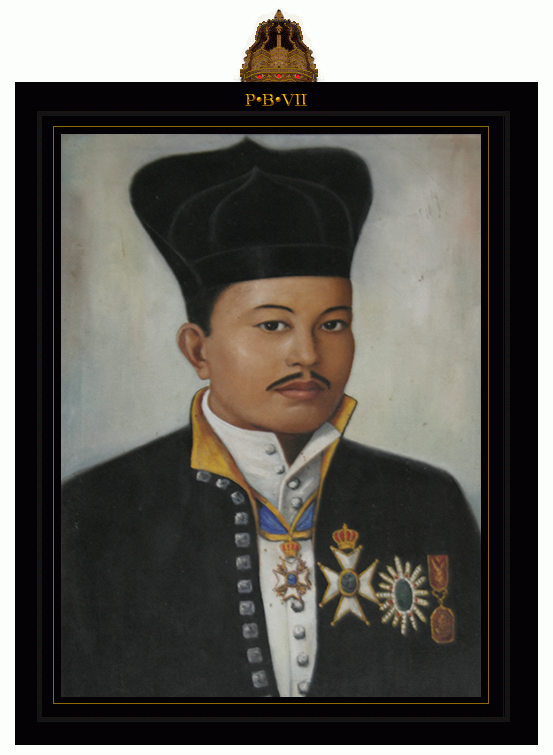|
Serimpi
The Srimpi ( jv, ꦱꦿꦶꦩ꧀ꦥꦶ, translit=Srimpi) (also written as Serimpi) is a ritualised dance of Java, Indonesia, associated with the royal palaces of Yogyakarta and Surakarta. The ''srimpi'' dance is one of the classical dances of Central Java. Along with the '' bedhaya'', ''srimpi'' epitomised the elegant ( jv, script=Latn, alus) character of the royal Javanese court, becoming a symbol of the ruler's power as well as the refinement of Javanese culture. Form and movement The ''srimpi'' dance is usually performed by four female dancers, however other numbers such as two, six or eight dancers is also possible, depending on the type of ''srimpi'' being performed. Similarity in looks, height and body type among dancers is preferred to achieve better aesthetics. ''Srimpi'' demonstrate soft, slow and graceful movements, highly stylised hand positions, stances and body poses, coupled with the shoulder-baring ''kemben'' outfit, to describe elegance, modesty, refinement, bea ... [...More Info...] [...Related Items...] OR: [Wikipedia] [Google] [Baidu] |
Gamelan
Gamelan () ( jv, ꦒꦩꦼꦭꦤ꧀, su, ᮌᮙᮨᮜᮔ᮪, ban, ᬕᬫᭂᬮᬦ᭄) is the traditional ensemble music of the Javanese, Sundanese, and Balinese peoples of Indonesia, made up predominantly of percussive instruments. The most common instruments used are metallophones played by mallets and a set of hand-played drums called '' kendhang/Kendang'', which register the beat. The kemanak (a banana-shaped idiophone) and gangsa (another metallophone) are commonly used gamelan instruments in Bali. Other instruments include xylophones, bamboo flutes, a bowed instrument called a ''rebab'', a zither-like instrument ''siter'' (in Javanese ensemble) and vocalists named '' sindhen'' (female) or ''gerong'' (male).Sumarsam (1998)''Introduction to Javanese Gamelan'' Middletown. Although the popularity of gamelan has declined since the introduction of pop music, gamelan is still commonly played in many traditional ceremonies and other modern activities in Indonesia, b ... [...More Info...] [...Related Items...] OR: [Wikipedia] [Google] [Baidu] |
Bedhaya
The bedhaya (also written as bedoyo, beḍaya and various other transliterations) ( jv, ꦧꦼꦝꦪ, translit=Bedhaya) is a sacred, ritualised Javanese dance of Java, Indonesia, associated with the royal palaces of Yogyakarta and Surakarta. Along with the srimpi, the bedhaya epitomized the elegant ( jv, ꦲꦭꦸꦱ꧀, translit=alus) character of the royal court and became an important symbol of the ruler's power. The bedhaya has different forms in the two court cities, the ''bedhaya Ketawang'' in Surakarta (Solo) and the ''bedhaya Semang'' in Yogyakarta, the latter of which has not been performed for more than 20 years. The Solonese dance continues to be performed once per year on the second day of the Javanese month of Ruwah (May), to commemorate the ascension of the current Susuhunan (prince) of Surakarta. Nine females, relatives or wives of the Susuhunan, perform the dance before a private audience. An invitation to anyone outside of the inner circle of the court is a conside ... [...More Info...] [...Related Items...] OR: [Wikipedia] [Google] [Baidu] |
Bedhaya
The bedhaya (also written as bedoyo, beḍaya and various other transliterations) ( jv, ꦧꦼꦝꦪ, translit=Bedhaya) is a sacred, ritualised Javanese dance of Java, Indonesia, associated with the royal palaces of Yogyakarta and Surakarta. Along with the srimpi, the bedhaya epitomized the elegant ( jv, ꦲꦭꦸꦱ꧀, translit=alus) character of the royal court and became an important symbol of the ruler's power. The bedhaya has different forms in the two court cities, the ''bedhaya Ketawang'' in Surakarta (Solo) and the ''bedhaya Semang'' in Yogyakarta, the latter of which has not been performed for more than 20 years. The Solonese dance continues to be performed once per year on the second day of the Javanese month of Ruwah (May), to commemorate the ascension of the current Susuhunan (prince) of Surakarta. Nine females, relatives or wives of the Susuhunan, perform the dance before a private audience. An invitation to anyone outside of the inner circle of the court is a conside ... [...More Info...] [...Related Items...] OR: [Wikipedia] [Google] [Baidu] |
Gamelan
Gamelan () ( jv, ꦒꦩꦼꦭꦤ꧀, su, ᮌᮙᮨᮜᮔ᮪, ban, ᬕᬫᭂᬮᬦ᭄) is the traditional ensemble music of the Javanese, Sundanese, and Balinese peoples of Indonesia, made up predominantly of percussive instruments. The most common instruments used are metallophones played by mallets and a set of hand-played drums called '' kendhang/Kendang'', which register the beat. The kemanak (a banana-shaped idiophone) and gangsa (another metallophone) are commonly used gamelan instruments in Bali. Other instruments include xylophones, bamboo flutes, a bowed instrument called a ''rebab'', a zither-like instrument ''siter'' (in Javanese ensemble) and vocalists named '' sindhen'' (female) or ''gerong'' (male).Sumarsam (1998)''Introduction to Javanese Gamelan'' Middletown. Although the popularity of gamelan has declined since the introduction of pop music, gamelan is still commonly played in many traditional ceremonies and other modern activities in Indonesia, b ... [...More Info...] [...Related Items...] OR: [Wikipedia] [Google] [Baidu] |
Javanese People
The Javanese ( id, Orang Jawa; jv, ꦮꦺꦴꦁꦗꦮ, ''Wong Jawa'' ; , ''Tiyang Jawi'' ) are an ethnic group native to the central and eastern part of the Indonesian island of Java. With approximately 100 million people, Javanese people are the largest ethnic group in Indonesia and the whole Southeast Asia in general. Their native language is Javanese, it is the largest of the Austronesian languages in number of native speakers and also the largest regional language in Southeast Asia. The Javanese as the largest ethnic group in the region have dominated the historical, social, and political landscape in the past as well as in modern Indonesia and Southeast Asia. There are significant numbers of Javanese diaspora outside of central and eastern Java regions, including the other provinces of Indonesia, and also in another countries such as Suriname, Singapore, Malaysia, Egypt, Saudi Arabia, South Africa, Sri Lanka, Yemen and the Netherlands. The Javanese ethnic group h ... [...More Info...] [...Related Items...] OR: [Wikipedia] [Google] [Baidu] |
Kejawèn
''Kejawèn'' ( jv, ꦏꦗꦮꦺꦤ꧀, Kajawèn) or Javanism, also called Kebatinan, ''Agama Jawa'', and '' Kepercayaan'', is a Javanese religious tradition, consisting of an amalgam of animistic, Buddhist, and Hindu aspects. It is rooted in Javanese history and religiosity, syncretizing aspects of different religions. Definitions The term ''kebatinan'' is being used interchangeably with ''kejawèn'', ''Agama Jawa'' and '' Kepercayaan'', although they are not exactly the same: * Kebatinan: "the science of the inner", "inwardness", derived from the Arabic word ''batin'', meaning "inner" or "hidden". * Kejawèn: "Javanism", the culture and religious beliefs and practices of the Javanese people of Central Java and East Java. It is "not a religious category, but refers to an ethic and a style of life that is inspired by Javanist thinking". * Agama Jawa: "the Javanese religion" * Kepercayaan: "belief", "faith", full term: ''Kepercayaan kepada Tuhan Yang Maha Esa'', "Believer in ... [...More Info...] [...Related Items...] OR: [Wikipedia] [Google] [Baidu] |
Baksa Kembang
Baksa Kembang is one of the classical Banjar dances originating from South Kalimantan, Indonesia, which functions as a welcoming dance () for guests. This dance is usually played by female dancers with the condition that the number of dancers must be odd. Baksa Kembang was originally a dance that was only performed in the royal environment to welcome guests of honor or royal relatives. But along with developments, this dance became popular in the community when the Sultanate of Banjar began to open access for the public to watch this dance performance, so the Baksa kembang became popular in the community and became one of the regional cultures in South Kalimantan. Performance Baksa Kembang dancers are equipped with a scarf () that is used to dance so that when dancing they look elegant and charming. One of the characteristics of the Baksa Kembang dance costume is the crown on its head called the ''gajah gemuling'', which is a crown decorated with two small bogam flowers and wove ... [...More Info...] [...Related Items...] OR: [Wikipedia] [Google] [Baidu] |
Mangkunegaran
The Duchy of Mangkunegaran ( id, Kadipaten Mangkunegaran) is a small Javanese princely state located within the region of Surakarta in Indonesia. It was established in 1757 by Raden Mas Said, when he submitted his army to Pakubuwono III in February, and swore allegiance to the rulers of Surakarta, Yogyakarta, and the Dutch East Indies Company, and was given an appanage of 4000 households. The Palace of the rulers of Mangkunegaran was established by Raden Mas Said who signed a treaty with the Dutch East India Company (VOC) in 1757. By virtue of the treaty, he became the ruler of a part of Eastern Mataram and was henceforth known as Mangkunegara I. Known as ''Pura Mangkunegaran'', the palace is located in the center of the city of Solo. List of rulers * Mangkunegara I (Raden Mas Said), 17571796 * Mangkunegara II (Raden Mas Sulama), 17961835 * Mangkunegara III, 18351853 * Mangkunegara IV, 18531881 * Mangkunegara V, 18811896 * Mangkunegara VI, 18961916 * Mangkunegara VII, 19161 ... [...More Info...] [...Related Items...] OR: [Wikipedia] [Google] [Baidu] |
Kraton Ngayogyakarta Hadiningrat
The Royal Palace of Yogyakarta ( id, Keraton Ngayogyakarta Hadiningrat, jv, ꦏꦿꦠꦺꦴꦤ꧀ꦔꦪꦺꦴꦒꦾꦏꦂꦠꦲꦢꦶꦤꦶꦔꦿꦠ꧀) is a palace complex in the city of Yogyakarta, Yogyakarta Special Region, Indonesia. It is the seat of the reigning Sultan of Yogyakarta and his family. The complex is a center of Javanese culture, and contains a museum displaying royal artifacts. It is guarded by the Yogyakarta Kraton Guards ( Indonesian: ''Prajurit Keraton Ngayogyakarta Hadiningrat''). History The complex was built in 1755–1756 ( AJ 1682) for Hamengkubuwono I, the first Sultan of Yogyakarta.OBYEK PENELITIAN http://elib.unikom.ac.id/ It was one of the monarch's first acts after the signing of the |
Bandung
Bandung ( su, ᮘᮔ᮪ᮓᮥᮀ, Bandung, ; ) is the capital city of the Indonesian province of West Java. It has a population of 2,452,943 within its city limits according to the official estimates as at mid 2021, making it the fourth most populous city in Indonesia. Greater Bandung (Bandung Basin Metropolitan Area/BBMA) is the country's third-largest metropolitan area, with nearly nine million inhabitants. Located above sea level, the highest point in the North area with an altitude of 1,050 meters and the lowest in the South is 675 meters above sea level, approximately southeast of Jakarta, Bandung has cooler year-round temperatures than most other Indonesian cities. The city lies on a river basin surrounded by volcanic mountains that provides a natural defence system, which was the primary reason for the Dutch East Indies government's plan to move the capital from Batavia (modern-day Jakarta) to Bandung. The Dutch first established tea plantations around the mou ... [...More Info...] [...Related Items...] OR: [Wikipedia] [Google] [Baidu] |
Pakubuwono VII
Pakubuwono VII (also transliterated Pakubuwana VII) (28 July 1796 – 10 May 1858) was the seventh Susuhunan (ruler of Surakarta Surakarta ( jv, ꦯꦸꦫꦏꦂꦠ), known colloquially as Solo ( jv, ꦱꦭ; ), is a city in Central Java, Indonesia. The 44 km2 (16.2 sq mi) city adjoins Karanganyar Regency and Boyolali Regency to the north, Karanganyar Regency and Sukoh ...) from 1830 to 1858. He was a younger son of Pakubuwono IV. References * Miksic, John N. (general ed.), et al. (2006) ''Karaton Surakarta. A look into the court of Surakarta Hadiningrat, central Java'' (First published: 'By the will of His Serene Highness Paku Buwono XII'. Surakarta: Yayasan Pawiyatan Kabudayan Karaton Surakarta, 2004) Marshall Cavendish Editions Singapore Burials at Imogiri Susuhunan of Surakarta 1796 births 1858 deaths Indonesian royalty {{Indonesia-bio-stub ... [...More Info...] [...Related Items...] OR: [Wikipedia] [Google] [Baidu] |





.jpg)

